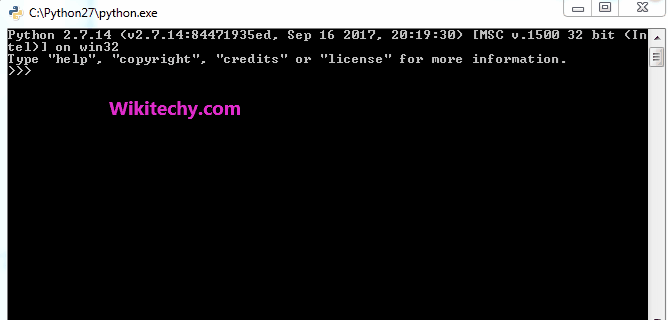
Learn Python - Python tutorial - python float precision - Python examples - Python programs
Python in its definition allows to handle precision of floating point numbers in several ways using different functions. Most of them are defined under the “math” module.
1. trunc() :- This function is used to eliminate all decimal part of the floating point number and return the integer without the decimal part.
2. ceil() :- This function is used to print the least integer greater than the given number.
3. floor() :- This function is used to print the greatest integer smaller than the given integer.
python - Sample - python code :
# Python code to demonstrate ceil(), trunc()
# and floor()
# importing "math" for precision function
import math
# initializing value
a = 3.4536
# using trunc() to print integer after truncating
print ("The integral value of number is : ",end="")
print (math.trunc(a))
# using ceil() to print number after ceiling
print ("The smallest integer greater than number is : ",end="")
print (math.ceil(a))
# using floor() to print number after flooring
print ("The greatest integer smaller than number is : ",end="")
print (math.floor(a))python tutorial - Output :
The integral value of number is : 3 The smallest integer greater than number is : 4 The greatest integer smaller than number is : 3
There are many ways to set precision of floating point value. Some of them is discussed below.
1. Using “%” :- “%” operator is used to format as well as set precision in python. This is similar to “printf” statement in C programming.
2. Using format() :- This is yet another way to format the string for setting precision.
3. Using round(x,n) :- This function takes 2 arguments, number and the number till which we want decimal part rounded.
python - Sample - python code :
# Python code to demonstrate precision
# and round()
# initializing value
a = 3.4536
# using "%" to print value till 2 decimal places
print ("The value of number till 2 decimal place(using %) is : ",end="")
print ('%.2f'%a)
# using format() to print value till 2 decimal places
print ("The value of number till 2 decimal place(using format()) is : ",end="")
print ("{0:.2f}".format(a))
# using round() to print value till 2 decimal places
print ("The value of number till 2 decimal place(using round()) is : ",end="")
print (round(a,2))python tutorial - Output :
The value of number till 2 decimal place(using %) is : 3.45 The value of number till 2 decimal place(using format()) is : 3.45 The value of number till 2 decimal place(using round()) is : 3.45
